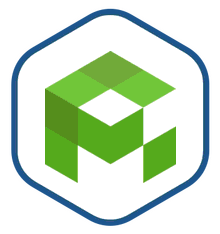

I should probably digress here for a moment and explain why. This is the point, and the best opportunity, to upcycle the existing way of doing dev environment to produce a proper, production-grade product. As our Vagrant environment is now functional, it's time to break it! This is the moment to look for how things can be done better (too rigid/too lose versioning? Sloppy environment setup?) and replace them with the right way to do stuff, one that won't bite us in the backside. Following that is the first hurdle to go over - convert all the instruction/scripts into Ansible playbook(s), and only stopping when doing a clear vagrant up or vagrant reload we will have a fully working environment. It always starts with an app, whatever it may be and reading the readmes available while Vagrant and VirtualBox is installing and updating. I will explain it on "live-example" of how the Rome got built, basing that current methodology exists only of readme.md and wishes of good luck (as it usually is )). Since I am a bit tired of yapping the same every single time, I've decided to write it up and share with the world this way, and send people to read it instead ). Often enough I have to explain my way of going about setting up a CI/CD pipeline with multiple deployment platforms.

Other Benefits: Kubernetes is backed by the Cloud Native Computing Foundation (CNCF), huge community among container orchestration tools, it is an open source and modular tool that works with any OS.
 Scalability: All-in-one framework for distributed systems. Monitoring: It supports multiple versions of logging and monitoring when the services are deployed within the cluster (Elasticsearch/Kibana (ELK), Heapster/Grafana, Sysdig cloud integration). Functionality: Kubernetes as a complex installation and setup process, but it not as limited as Docker Swarm. Applications: An application can be deployed using a combination of pods, deployments, and services (or micro-services). Key features: Easy and flexible installation, Clear dashboard, Great scaling operations, Monitoring is an integral part, Great load balancing concepts, Monitors the condition and ensures compensation in the event of failure. The main reason we have chosen Kubernetes over Docker Swarm is related to the following artifacts: Redis as preferred in-memory database/store (great for caching). PostgreSQL as preferred database system. Amazon S3) for deploying in stage (production-like) and production environments SSLMate (using OpenSSL) for certificate management.
Scalability: All-in-one framework for distributed systems. Monitoring: It supports multiple versions of logging and monitoring when the services are deployed within the cluster (Elasticsearch/Kibana (ELK), Heapster/Grafana, Sysdig cloud integration). Functionality: Kubernetes as a complex installation and setup process, but it not as limited as Docker Swarm. Applications: An application can be deployed using a combination of pods, deployments, and services (or micro-services). Key features: Easy and flexible installation, Clear dashboard, Great scaling operations, Monitoring is an integral part, Great load balancing concepts, Monitors the condition and ensures compensation in the event of failure. The main reason we have chosen Kubernetes over Docker Swarm is related to the following artifacts: Redis as preferred in-memory database/store (great for caching). PostgreSQL as preferred database system. Amazon S3) for deploying in stage (production-like) and production environments SSLMate (using OpenSSL) for certificate management. 
nginx as web server (preferably used as facade server in production environment).Heroku for deploying in test environments.Kubernetes as cluster management for docker containers.VirtualBox for operating system simulation tests.Docker Compose for multi-container application management)
#Bitnami owncloud loses data code#
Prettier / TSLint / ESLint as code linter. CircleCI for continuous integration (automatize development process). Respectively Git as revision control system. GitHub Pages/ Markdown for Documentation, GettingStarted and HowTo's) for collaborative review and code management tool (This means setting up ownCloud again).Our whole DevOps stack consists of the following tools: Then on the owncloud setup screen choose advanced and enter the path. This means setting up owncloud again.Īfter installing owncloud, setup your mountpoint into the jail (I use /mnt/files). I'm assuming you trying to access a dataset of files on your FreeNAS from ownCloud using an external mountpoint (the local option)? I suggest you instead set up your ownCloud's datadirectory to a mountpoint so that every time you delete something it doesn't have to move the file between datasets into the trash bin in ownCloud's datadirectory. Click to expand.what does ownCloud have to do with port numbers, this is set by your webserver? When you accessed ownCloud locally you have should have been able to tell what port it was using It's either in your URL bar, 80 for HTTP and not displayed in your URL bar, or 40 for HTTPS and not displayed in your URL bar.







 0 kommentar(er)
0 kommentar(er)
